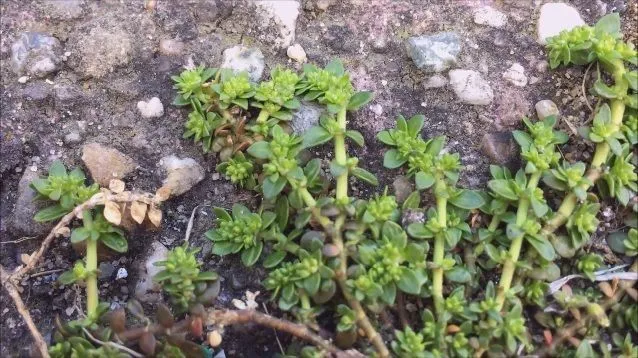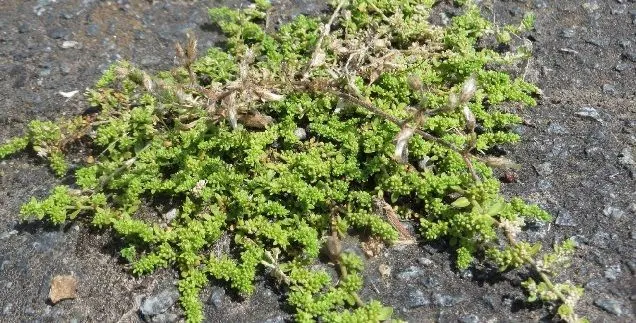Traditionally Herniaria glabra or the Rupturewort grass has been a rustic plant that has grown spontaneously on roadsides, stony and dry environments.
Hernaria glabra (its scientific name), belongs to the family Cariofilaceae. Woody, rustic and creeping in appearance, it can be easily confused with other species and is not attractive to the eye.
However, due to its scarcity of attention in water needs, adaptability to the climate and the environment, it can be useful as an upholstery plant in gardens and ornamental areas.
Today, we can easily find it anywhere in the Spanish peninsula, Europe and Asia.
Table of Contents
Medicinal properties of Herniaria glabra

Compounds identified in the plant
- Coumarins
- Flavonoids
- Phenolic acids
- Saponins
- Tannins
- Triterpenoids
- Herniarin
Precautions to keep in mind
The European Commission discourages its administration considering that the therapeutic effectiveness of the drug and its preparations has not been sufficiently demonstrated.
From the scientific point of view, herniaria glabra it has not undergone studies and research that can corroborate its medicinal properties.
However, it has been a medicinal plant used as a traditional remedy against inflammation of the urinary tract.
Its name (although it can be confused with other plants) is also known as grass Rupturewort , and has been used mainly as a treatment and prevention of kidney stones.
This is because it was claimed (without studies to corroborate it) that reduces the formation of kidney stones and urinary sediments, facilitating the expulsion of liquids.
When does Rupturewort grass bloom?
The plant blooms at the beginning of the year, almost in spring, although it can continue to bloom until summer. Harvesting is carried out in the same flowering period, since it is at this time when the plant is richest in active ingredients.
It is important that once dried, it is kept in airtight jars and out of the light.
Diuretic effect
Within the traditional remedies, Herniaria glabra it was used in cases of edema, with great potential as a diuretic and antispasmodic.
Formerly it was used for mild cases of cystitis and urethritis. It is believed that the diuretic effect is due to the saponin content of the plant.
These diuretic effects can also be combined with the same ones offered by the properties of dandelion, whose active ingredients accelerate the release of liquids and facilitate the elimination of toxins.
Other effects
Formerly (about the year 1600) there were scholars who attributed to Herniaria glabra healing properties against problems such as hernia (hence its name). These attributions have been lost in time, classifying the plant more from the diuretic and antispasmodic point of view.
Some of the agents and extracts present in the plant may have anti-cough effect, facilitating expectoration.
Today, the stone-breaking herb is forgotten and in disuse, either because of ignorance, because of low scientific evidence and because its properties dissipate quickly once it is collected.
Used parts of Rupturewort
Practically the entire aerial part of the plant was used, with a greater predilection for flowers. The roots were discarded, although to this day it is not known for sure if they can have medicinal properties.
The collection of Herniaria glabra it is carried out during flowering, drying it outdoors and in a ventilated place.
The fact of growing it in rustic, sunny environments and almost without water makes it generate more extracts and essential oils, compared to plants grown in irrigation and protected from external agents.
The taste of the aerial part (leaves, flowers and stems) has a slightly bitter taste, being advisable to avoid a conservation of the plant greater than 6 months, since its properties could be lost or dissipated.

How to Take It to Get Its Benefits
To make a tea when you had diuretic problems, weighs between 1 and 2 grams per cup of the stems and flowers of herniaria glabra drought. The intake formerly used was 2 to 3 cups per day.
Some commercial herbalist products that base their principles on treating bladder problems introduce a small part of the Rupturewort plant among their ingredients.
Possible side effects and contraindications
So far, no contraindications have been identified or serious problems when using Herniaria glabra. Its consumption in pregnant women and during the lactation period is discouraged.
As we have said before, there is still no clear scientific evidence that gives the medicinal properties traditionally attributed.
